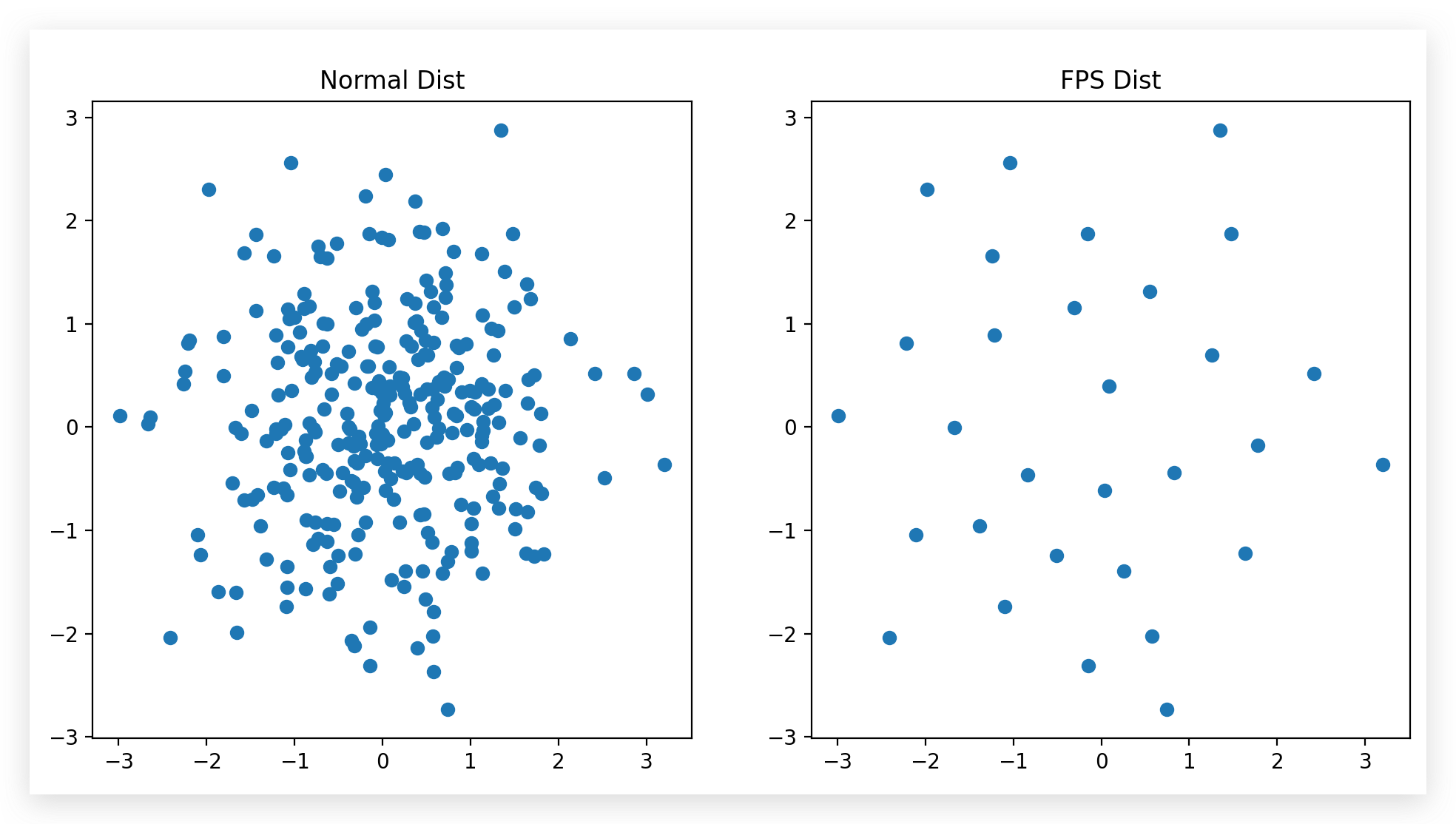1
2
3
4
5
6
7
8
9
10
11
12
13
14
15
16
17
18
19
20
21
22
23
24
25
26
27
28
29
30
31
32
33
34
35
36
37
38
39
40
41
42
43
44
45
46
47
48
49
50
51
52
53
| import numpy as np
import matplotlib.pyplot as plt
def fps(points, n_samples):
points = np.array(points)
points_left = np.arange(len(points))
sample_inds = np.zeros(n_samples, dtype='int')
dists = np.ones_like(points_left) * float('inf')
selected = 0
sample_inds[0] = points_left[selected]
points_left = np.delete(points_left, selected)
for i in range(1, n_samples):
last_added = sample_inds[i-1]
dist_to_last_added_point = (
(points[last_added] - points[points_left])**2).sum(-1)
dists[points_left] = np.minimum(dist_to_last_added_point,
dists[points_left])
selected = np.argmax(dists[points_left])
sample_inds[i] = points_left[selected]
points_left = np.delete(points_left, selected)
return points[sample_inds]
num,dim = 300,2
x=np.random.randn(num,dim)
ds=fps(x,30)
print(x.shape)
plt.figure()
plt.subplot(1,2,1)
plt.scatter(x[:,0],x[:,1])
plt.title('Normal Dist')
plt.subplot(1,2,2)
plt.scatter(ds[:,0],ds[:,1])
plt.title('FPS Dist')
plt.show()
|

